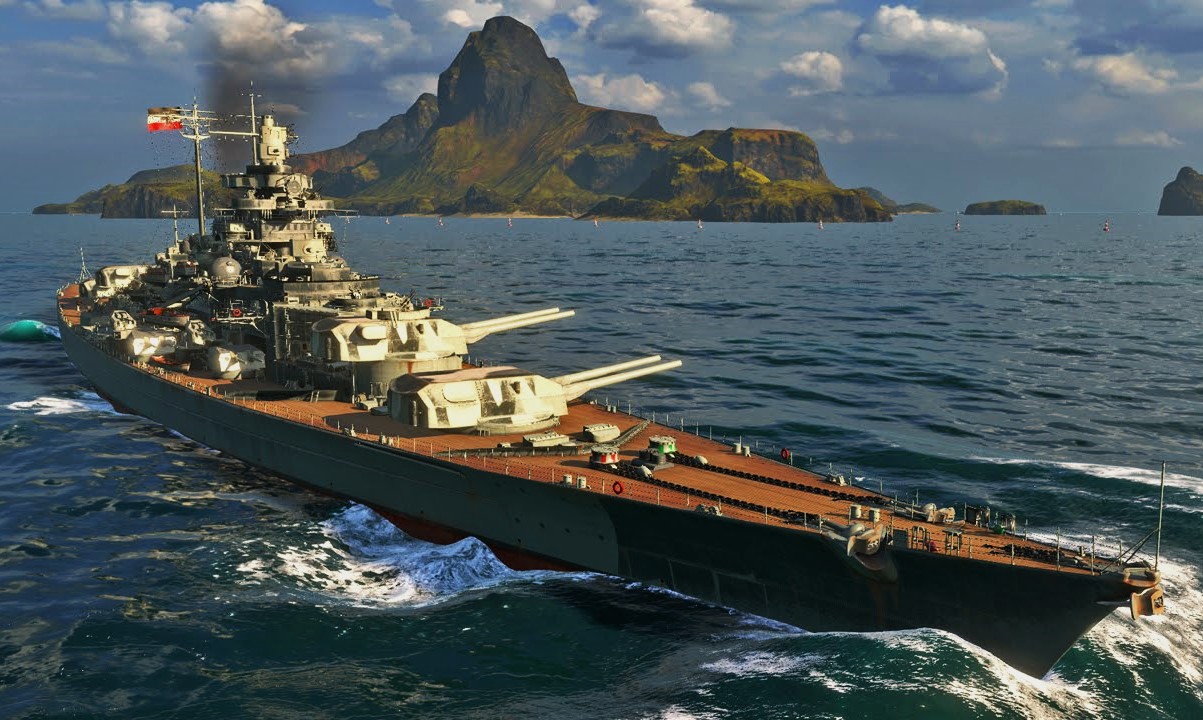
Tirpitz, the sister ship of the infamous Bismarck, was a formidable force during World War II. Built for the German Kriegsmarine, this battleship was the heaviest ever constructed by a European navy. Why was Tirpitz so significant? Tirpitz served as a constant threat to Allied convoys, earning the nickname "The Lonely Queen of the North." Despite never engaging in a major battle, her mere presence tied up significant Allied resources. Did you know that she was hidden in Norwegian fjords to avoid detection? Her story is filled with daring raids, relentless bombings, and a dramatic end. Dive into these 38 facts to uncover the fascinating history of Tirpitz.
Key Takeaways:
- The Tirpitz, a massive battleship of World War II, was named after Admiral Alfred von Tirpitz and had advanced technology, but met a tragic end when it was sunk by British bombers.
- With its powerful armament and advanced design, the Tirpitz posed a significant threat to Allied forces, but its sinking marked the end of the German battleship threat in World War II.
The Mighty Tirpitz: An Overview
The Tirpitz was one of the most formidable battleships of World War II. As the sister ship of the infamous Bismarck, it played a significant role in naval warfare. Here are some fascinating facts about this colossal warship.
-
The Tirpitz was named after German Admiral Alfred von Tirpitz, the architect of the Imperial German Navy.
-
Launched on April 1, 1939, it was the second of the Bismarck-class battleships.
-
At full load, the Tirpitz displaced over 52,600 tons, making it one of the heaviest battleships ever built.
-
The ship measured 251 meters (823 feet) in length, which is nearly the length of two and a half football fields.
-
Its main armament consisted of eight 38 cm (15 in) SK C/34 naval guns, arranged in four twin turrets.
Construction and Design
The Tirpitz was a marvel of engineering, designed to be both powerful and resilient. Its construction involved some of the most advanced techniques of the time.
-
The ship's armor was designed to withstand heavy artillery fire, with a belt armor thickness of up to 320 mm (12.6 inches).
-
It took over 2,000 workers and nearly three years to complete the construction of the Tirpitz.
-
The ship was powered by 12 Wagner superheated boilers, which drove three Brown, Boveri & Cie geared steam turbines.
-
The maximum speed of the Tirpitz was 30.8 knots (57 km/h or 35 mph), making it one of the fastest battleships of its time.
-
The ship had a range of 8,870 nautical miles (16,430 km or 10,210 miles) at a cruising speed of 19 knots (35 km/h or 22 mph).
Operational History
The Tirpitz saw action in various theaters of World War II, often posing a significant threat to Allied naval operations.
-
Its first mission was Operation Rösselsprung in July 1942, aimed at intercepting Allied convoys to the Soviet Union.
-
The Tirpitz was stationed in Norwegian fjords for much of its operational life, serving as a "fleet in being" to tie down Allied naval forces.
-
It was involved in several engagements, including the Battle of the North Cape and Operation Source.
-
The ship was a constant target for Allied bombers and submarines, leading to numerous attacks and damage over its career.
-
The Royal Navy launched several daring raids to neutralize the Tirpitz, including the famous X-craft midget submarine attack in 1943.
The End of the Tirpitz
Despite its formidable presence, the Tirpitz met a tragic end. Its destruction marked a significant moment in naval history.
-
On November 12, 1944, the Tirpitz was finally sunk by British Lancaster bombers using 12,000-pound Tallboy bombs.
-
The ship capsized in Tromsø Fjord, Norway, with the loss of over 1,000 crew members.
-
The wreck of the Tirpitz remained a hazard to navigation until it was partially salvaged in the late 1940s and early 1950s.
-
Some parts of the ship were scrapped and sold, while others remain on the seabed to this day.
-
The sinking of the Tirpitz was a significant morale boost for the Allies and marked the end of the German battleship threat in World War II.
Legacy and Cultural Impact
The Tirpitz has left a lasting legacy, both in naval history and popular culture. Its story continues to fascinate historians and enthusiasts alike.
-
The ship has been the subject of numerous books, documentaries, and films, highlighting its dramatic history.
-
The Tirpitz's story is often compared to that of its sister ship, the Bismarck, which also met a tragic end.
-
Several museums and memorials in Germany and Norway commemorate the Tirpitz and its crew.
-
The ship's bell was recovered and is now displayed at the Laboe Naval Memorial in Germany.
-
The Tirpitz has inspired various works of fiction, including novels and video games, cementing its place in popular culture.
Technological Innovations
The Tirpitz featured several technological innovations that set it apart from other battleships of its time.
-
The ship was equipped with advanced radar systems, including the FuMO 23 search radar and FuMO 27 gunnery radar.
-
It had a sophisticated fire-control system for its main guns, allowing for accurate targeting at long ranges.
-
The Tirpitz was one of the first battleships to be fitted with anti-aircraft rockets, providing an additional layer of defense against air attacks.
-
The ship's hull design incorporated bulbous bows, which improved its hydrodynamic efficiency and speed.
-
The Tirpitz also featured extensive underwater protection, including multiple layers of torpedo bulkheads.
Crew and Life Onboard
Life aboard the Tirpitz was challenging, with the crew facing harsh conditions and constant threats from enemy forces.
-
The ship had a complement of over 2,600 officers and enlisted men, making it a floating city.
-
Crew members lived in cramped quarters, with limited privacy and amenities.
-
The ship's kitchens could prepare thousands of meals daily, ensuring the crew was well-fed during long deployments.
-
Recreational facilities included a cinema, library, and sports equipment to help maintain morale.
-
The crew underwent rigorous training and drills to ensure they were prepared for any combat situation.
The Tirpitz in Modern Times
Even decades after its sinking, the Tirpitz continues to capture the imagination of naval historians and enthusiasts.
-
The wreck site is a popular destination for divers and researchers, offering a glimpse into the past.
-
Artifacts from the Tirpitz, including personal items and pieces of the ship, are displayed in museums worldwide.
-
The legacy of the Tirpitz serves as a reminder of the immense power and destructive potential of battleships during World War II.
Final Thoughts on Tirpitz
Tirpitz, the sister ship of Bismarck, was one of the most formidable battleships of World War II. With its impressive size and firepower, it posed a significant threat to Allied naval forces. Despite numerous attempts to neutralize it, Tirpitz remained a constant menace until it was finally sunk in 1944. Its story is a testament to the engineering prowess and strategic importance of naval warfare during the era. From its construction to its eventual demise, Tirpitz's journey is filled with fascinating details that highlight the complexities of war. Understanding these facts not only provides insight into naval history but also underscores the relentless efforts of those involved in the conflict. Whether you're a history buff or just curious about World War II, the tale of Tirpitz offers a compelling glimpse into the past.
Frequently Asked Questions
Was this page helpful?
Our commitment to delivering trustworthy and engaging content is at the heart of what we do. Each fact on our site is contributed by real users like you, bringing a wealth of diverse insights and information. To ensure the highest standards of accuracy and reliability, our dedicated editors meticulously review each submission. This process guarantees that the facts we share are not only fascinating but also credible. Trust in our commitment to quality and authenticity as you explore and learn with us.


